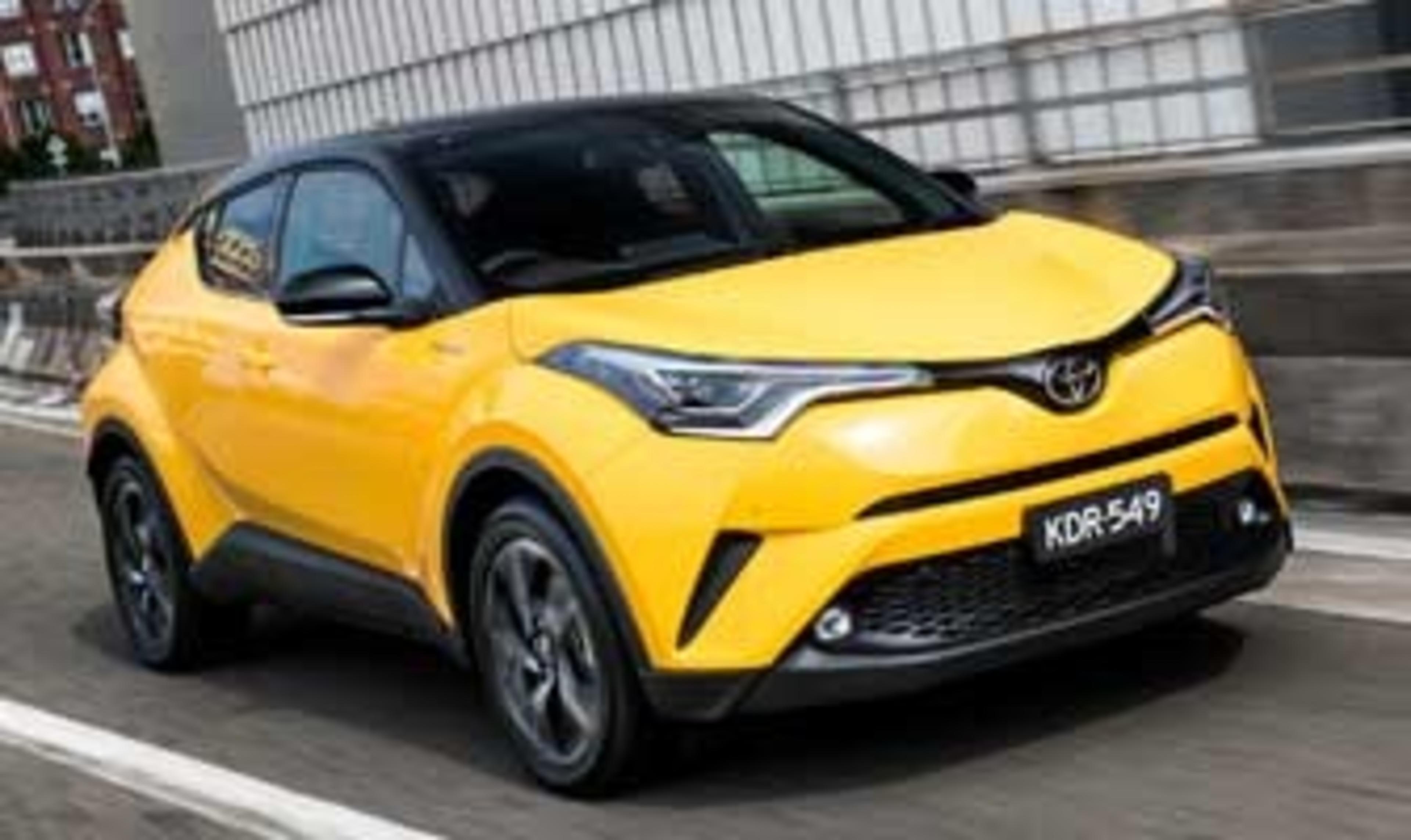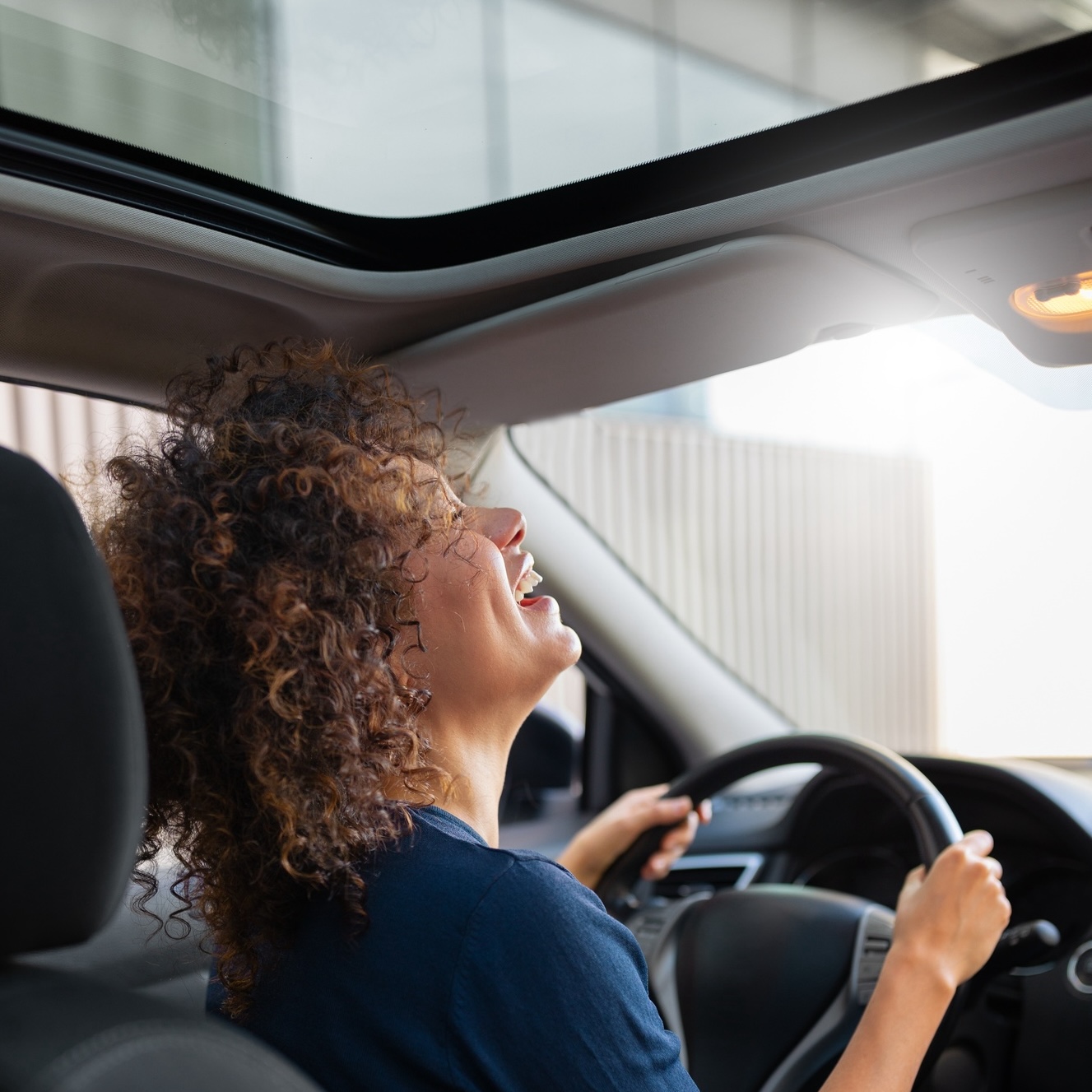
Review | 2017+ Toyota C-HR
Posted in Toyota Vehicle Reviews
Review | 2017+ Toyota C-HR
The new C-HR is a radical departure from Toyota’s regular stable of faithful vehicles. We jumped in to test the divisively styled new coupe.
At the time of its launch, the RAV4 was the funky, fun ‘recreational active vehicle’ for young urban dwellers shown in brochures surfing and rock-climbing and other leisurely pursuits. Whether they did these things were beside the point, the idea that the car could get you to these activities caught on in a big way. As buyers of the RAV4 matured, swapping the surfboards for prams, so too did their car of choice – beefing up to a medium SUV that grabbed people who wanted the space of a Camry but not the conservative image that came along with it.
That, of course, left the RAV4 beached with middle age spread between the Camry and Kluger – now unable to reprise to its light, active, youthful glory days: enter the Coupe High Rider or C-HR.
Initial Impression
Built on the same platform that underpins the new Prius, the C-HR looks a lot different to anything else on the lot at a Toyota dealership. The new ‘Keen Look’ design language shapes the outside with a sharp rake towards the back creating a head turning, lifted fastback look – especially in the dynamic range of colours available (Hornet Yellow and Electric Teal are sure to pop in the car park.)

Diamonds are a prominent theme throughout the C-HR, with diamond patterns in the trim, seating and instrument clusters – it evokes an upmarket vibe similar to their rich Lexus cousins.
The setup of the cabin is high class, with the dash angled towards the driver to improve visibility. The media system is the latest from Toyota, with ToyotaLink and Pandora compatibility, but the class-leading Apple CarPlay/Android Auto software is nowhere to be found – a slight omission (especially stacked up against competitors.)
Driveability

Only one engine is available across the two model, two drivetrain C-HR range in Australia – a newly developed 1.2L turbocharged option. Other countries (even the UK, which also uses right hand drive) get a hybrid option – something that’s on the list for Toyota Australia, but with a waitlist stretching months in its home country it’s unlikely to join the range this year.
Available with a six-speed manual in entry-level 2WD, the rest of the range comes equipped with a CVT automatic, where Toyota expects most of the sales to be done.
The auto works well at low speeds around town, though it doesn’t appreciate heavy acceleration off the line – the stepped ‘gears’ in the CVT don’t like it and the engine will rev its head off without delivering any significantly faster acceleration. Once it gets going, the C-HR is relatively settled, proving the merits of the AWD system available is a bit unnecessary – even though the hardest terrain most C-HRs will cover is a bit of loose gravel. It certainly feels secure – holding steady in the corners, and feeling well weighted on the road.
As a vehicle for tackling long stretches of road, though, the C-HR starts to make more sense. At highway speeds, it opens up into a comfortable cruiser, stretching its legs into a steady gallop on the road. The tiny turbo never feels stressed or underperforms despite being worked hard to shift the C-HR around.
Handling is excellent thanks to the wheels ‘pointing’ from as far into the corners of the body (again, inspired by diamonds – apparently the wagon looks like one from an aerial view), and whether it’s crawling around the city into tight spaces or trying to overtake on the highway. Steering is nicely weighted, even in slightly hairy situations – feedback is direct and points the C-HR exactly where you want it to go.
Liveability
SUVs are currently outselling passenger cars, with drivers buying into the lifestyle benefits more than anything else – riding high, being able to look down on the road and feel, seemingly, more secure are priorities for more and more car buyers – and it’s only recently that car makers have caught up to make their products more appealing.
The lifestyle of LandCruiser’s crawling across the Snowy Mountains continues to inform the modern day SUV: the idea of grand off-road touring, about the ability to pick up and go anywhere without needing to having two cars in the garage.

The C-HR is the latest in a trend of ‘baby SUVs’ that are built for cruising weekend drives, rather than heavy duty, skid plate scraping adventures out to Cape York.
On this front, the C-HR excels with creature comforts complementing a practically packaged ‘lifestyle’ vehicle. Inside, the cabin is expertly constructed to feel much more premium than its price tag would suggest, the ‘diamond’ theme and ambient lighting creating a pretty classy atmosphere.
Toyota’s are known for small increases in technology, relying on proven options over the latest gadgets that may or may not go expensively wrong. Driving around, it’s all of these proven little things that add up to a well-rounded experience in the C-HR.
The addition of the Toyota Safety Sense+ package across the range, including Active Cruise Control, Pre-Collision Safety System, Lane Departure Alert, Blind Spot Monitor and Rear Cross Traffic Alert is a commendable addition to the C-HR, and is one of the stand out vehicles in a crowded field of baby wagons.

The NanoE air purifying technology in the Koba grades apparently moisturises cabin air, but we didn’t receive any compliments on our glowing skin after getting out of the C-HR. Really, it combines the effects of a dehumidifier and air purifier to stop the air-conditioner from drying out the skin and making you feel tired when you’ve had the air going on long drives, further increasing its appeal as a leisure cruiser (although there are no guarantees of how the C-HR will add to your beauty regime.)
Seating is excellent up-front: well supported and spacious. In the rear, it’s good for two adults, three may find it a squeeze, while younger kids may not find the upward sweeping high rear windows very appealing if they can’t see out of it. A sunroof would be ideal, but would cut into the headroom for tall passengers.
Despite the pinched look of the rear end, headroom is perfectly adequate – the basketball team might find it a little testy on long drives, but for anyone who scrapes in at average height, the C-HR can fit your proportions.
One downside of the raked back end means that adding Blind Spot Monitoring has to offset the narrow field of vision when glancing out the sides, thanks to a thicker than usual C-pillar – a compromise of design.
Storage space is fine, better than some competitors, and there are a host of pockets in the C-HRs cabin to store bits and pieces, much like the RAV4. The boot is big enough to store a weeks worth of shopping for the family, but the relatively high boot lip may dissuade those thinking the C-HR will make a good car for grandma to make the journey down from the coast, comparatively the Corolla just ducks under the C-HRs storage space.
Fuel usage is good, officially at 6.3L/100km – which, again, is similar to the Corolla – and we didn’t notice any big drop from the fuel needle in our mix of city and highway driving.
All in all, the C-HR is a pretty nifty little addition to the Toyota lineup, one that is markedly different from anything that’s come before.
Cost
The 2WD, six-speed manual C-HR starts at $26,990 while the pricing structure has been simplified to add $2,000 for a CVT automatic, and a further $2,000 for all-wheel drive.
The up-spec Koba trim kicks off from $33,290 for the 2WD and $35,290 for the flagship AWD – the Koba can only be had with a CVT.
All prices exclude on-road costs including registration, stamp duty and dealer delivery. Premium paint and a two-tone white or black roof (available with selected colours on the Koba) are available at additional cost; the eye-catching Hornet Yellow with matching roof is the only standard colour in the palette.
Servicing is capped at $195 for the first three years or six scheduled services, with services due at 12 months or 15,000kms.
Conclusion
The C-HR plugs the gap that the RAV4 filled when it first arrived over twenty years ago: a city cruiser that provides access to a lifestyle or even the ideal of a lifestyle that goes beyond the city limits.
See the team at Motorama Toyota to test-drive the C-HR for yourself, or test out another of Toyota’s best selling SUVs in stock at Moorooka or Browns Plains.


